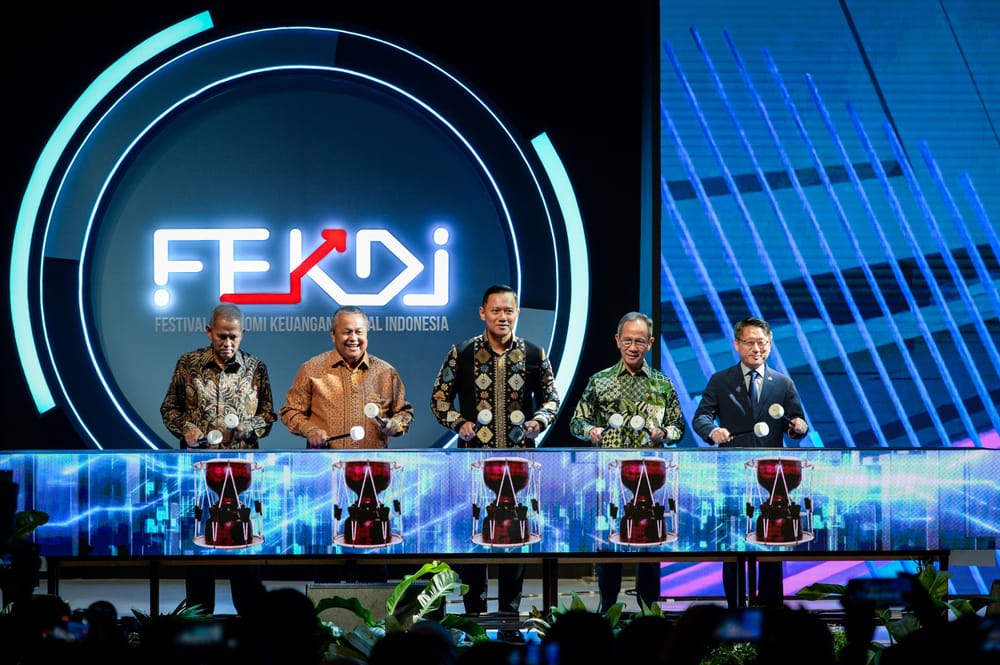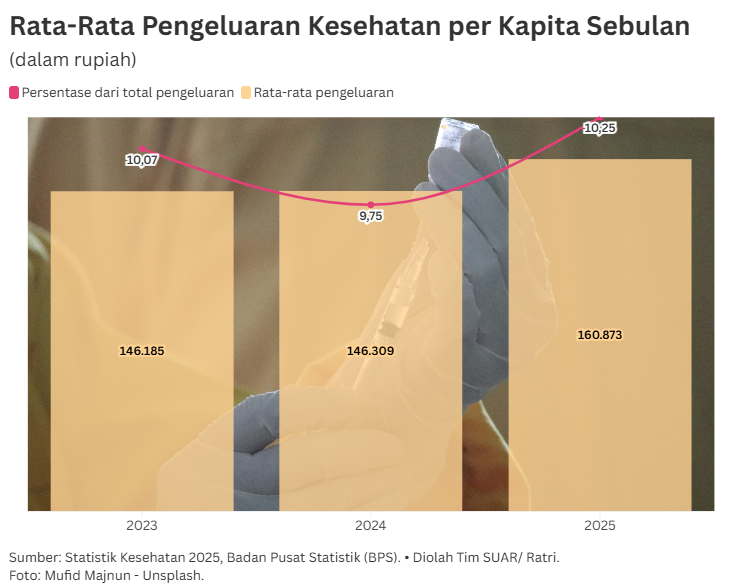The government on Wednesday (22/10/2025) officially lowered the highest retail price (HET) of subsidized fertilizers by 20%, making this policy the first time in history since the program was established decades ago.
Meanwhile, a number of farmer associations welcomed this decision and called it a concrete solution amidst the farmers' difficulties.
The policy, which takes effect from today, is carried out without increasing the subsidy budget from the state budget, but through industrial efficiency and improving the management of national fertilizer distribution.
The move was outlined in Decree of the Minister of Agriculture No. 1117/Kpts./SR.310/M/10/2025 on changes in the type, highest retail price, and allocation of subsidized fertilizers for fiscal year 2025.
This decrease covers all types of subsidized fertilizers used by farmers, namely urea from Rp2,250 per kilogram to Rp1,800 per kilogram, NPK from Rp2,300 per kilogram to Rp1,840 per kilogram, cocoa NPK from Rp3,300 per kilogram to Rp2,640 per kilogram, sugarcane-specific ZA from Rp1,700 per kilogram to Rp1,360 per kilogram, and organic fertilizer from Rp800 per kilogram to Rp640 per kilogram.
This policy is expected to be directly felt by more than 155 million beneficiaries consisting of farmers and their families throughout Indonesia.
Minister of Agriculture Andi Amran Sulaiman said this policy was a direct order from President Prabowo to ensure that fertilizers are available and affordable for farmers.
"The President ordered that fertilizers must reach farmers at affordable prices. There should be no delays, no leaks," Amran said in a press conference at his office.
According to Amran, the Ministry of Agriculture together with PT Pupuk Indonesia Holding Company (PIHC) have made comprehensive improvements to the management of subsidized fertilizers. Deregulation of distribution is done by cutting the supply chain so that the distribution goes directly from the factory to the farmers. The government is also strengthening supervision at all levels, from production to sales kiosks, to ensure that fertilizer prices are in line with regulations and right on target.
"Perpetrators who increase prices beyond the provisions will be subject to sanctions of revocation of business licenses and can be charged with crimes under Law Number 7/2014 on Trade," he said.
Amran explained that the efficiency achieved by the government managed to save up to Rp10 trillion and reduce fertilizer production costs by 26%. The revamping of the system has also improved the performance of fertilizer SOEs with projected profits reaching Rp7.5 trillion by 2026.
"This is the result of budget efficiency, effective, productive, and does not increase the burden of subsidies from the state budget," Amran said.
Farmers welcome
Chairman of the Indonesian Sugar Cane Farmers Association (APTRI) Soemitro Samadikoen welcomed the government's move to reduce the price of subsidized fertilizer by 20%.
According to him, the policy can help reduce farmers' production costs if the availability and distribution run smoothly. However, Soemitro assessed that the benefits of this policy will not be felt evenly because there are still many obstacles in the distribution of fertilizers in the field.
Soemitro explained that one of the main problems is the limited allocation of subsidies for sugarcane farmers. In some areas such as East Java, farmers only receive fertilizer subsidies for two hectares of land, even though their planting area is much larger.
Based on Minister of Agriculture Regulation No. 15 of 2025, fertilizer subsidies are given to farmers with a maximum land area of two hectares per planting season.
"If a farmer has ten hectares but only two hectares are subsidized, the production costs are still heavy," he said.
The current fertilizer distribution system is also not fully in favor of sugarcane farmers. The distribution through food crop farmer groups is considered to make it difficult for sugarcane farmers to access subsidized fertilizer.
Referring to the same provision, the handover point of subsidized fertilizer is done through farmer groups, farmer group associations, or cooperatives appointed by fertilizer SOEs, not directly from factories to farmers. "If farmer cooperatives can deliver fertilizer to farmers' homes, it can be faster and clearer," he said.
The impact of this policy, continued Soemitro, is that the fertilizer rations received by farmers are far below the ideal needs. He gave an example, in East Java one hectare of sugarcane land only received about 100 kilograms of ZA fertilizer, whereas the normal need can reach six to eight quintals per hectare. As a result, many farmers are forced to buy unsubsidized fertilizer to keep their crops productive.
Soemitro emphasized that the subsidy pattern should be calculated based on the area of land cultivated, not the number of individual recipients. According to him, a subsidy system based on the area of cultivated land would be more fair and in accordance with the real needs in the field.
"The subsidy should not be per person but per hectare," he said.
In the future, Soemitro hopes that fertilizer policies can be adjusted to the characteristics of commodities, such as sugarcane, which needs greater input .
The same thing was conveyed by the Chairman of Tani Merdeka Indonesia, Don Muzakir, who called this policy an important step for small farmers.
"We welcome and appreciate the historic step taken by President Prabowo Subianto in reducing the highest retail price of subsidized fertilizers by 20 percent, starting today, 22 October 2025.
This is not just a technical policy, but a tangible manifestation of the state's partiality towards small farmers and the future of national food security."
Don Muzakir mentioned the reduction in fertilizer prices as proof that efficiency and improved governance can produce concrete solutions.
"For decades, fertilizer prices have tended to rise periodically, adding to the production burden for farmers. Now, for the first time in history, fertilizer prices have been reduced without increasing the burden on the state budget, but through industrial efficiency and improved distribution governance. This is proof that big ideas can give birth to concrete solutions," he said.

Not enough
However, Chairman of the Indonesian Farmers Union (SPI) Henry Saragih believes that the policy of reducing subsidized fertilizer prices has not touched the root of the national agricultural problem.
He said this policy came too late and actually extended farmers' dependence on chemical fertilizers. According to Henry, the government should direct support to farmers to produce and use organic fertilizers.
"Subsidies should no longer be for chemical fertilizers, but to help farmers produce organic fertilizers," Henry said. He reminded that support for the use of organic fertilizers had been a government commitment since the time of President Joko Widodo, but has not been implemented consistently until now.
In line with Soemitro, Henry also highlighted the importance of building a more participatory fertilizer distribution system by involving farmer cooperatives. With this mechanism, farmers can participate in monitoring the price and distribution of fertilizers at the field level. He emphasized that fertilizer policy should be a step towards the independence and sustainability of the agricultural sector, not prolonging farmers' dependence on chemical fertilizers.
Professor of IPB University, Dwi Andreas Santosa, believes that the reduction in subsidized fertilizer prices can bring benefits to farmers as long as the distribution is timely and according to the needs in the field. According to him, this step is positive because it can reduce production input costs. However, Andreas reminded that the fertilizer subsidy policy should be evaluated so that it is truly felt by farmers, not just benefiting the industry.
"If fertilizers can be accessed on time, in place, in quantity, and the price is reduced, of course farmers will be happy," he said.
According to Andreas, lower fertilizer prices do not automatically increase productivity because most progressive farmers do not use subsidized fertilizers. Horticultural farmers or farmers with modern practices prefer non-subsidized fertilizers with better quality. In addition, excessive use of subsidized fertilizers has the potential to damage soil fertility and ecosystems.
Andreas believes that in the long term, input subsidies such as fertilizers should be shifted to output subsidies or direct support to farmers so that the benefits are better targeted.






